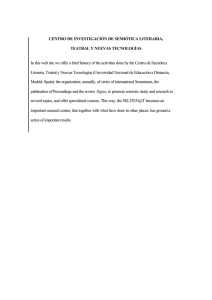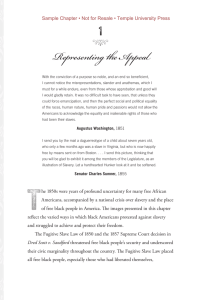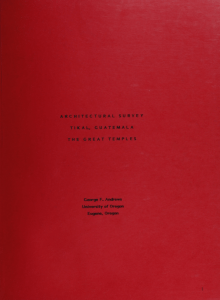8Requiem - Hotel Andante
Anuncio
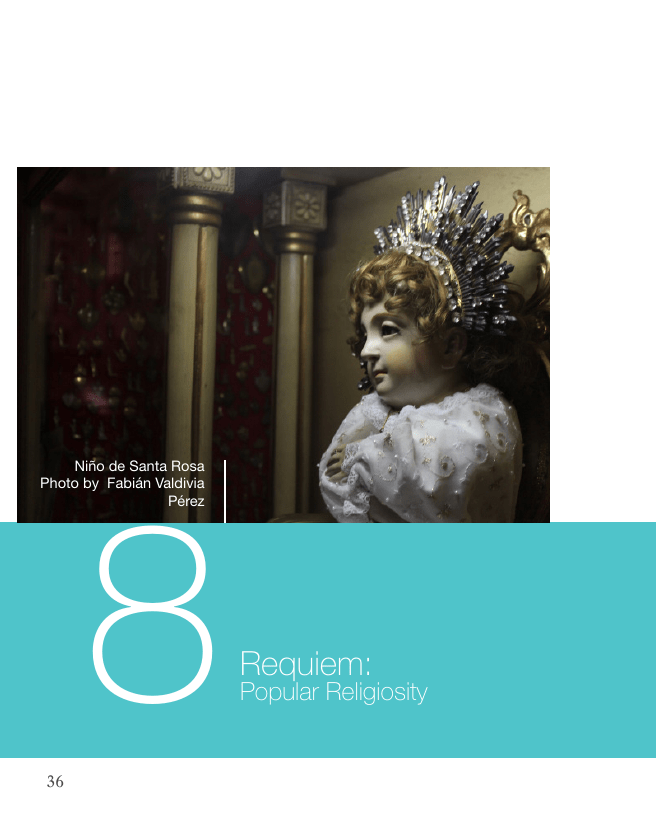
Niño de Santa Rosa Photo by Fabián Valdivia Pérez 8 36 Requiem: Popular Religiosity El niño cieguito 16 de Septiembre esquina 9 oriente, Centro Histórico. Monday to Sunday 8:30-20:00 hrs. At this venue, the visitor will find interesting images such as “El Divino Preso” (The Sacred Prisoner) located at the left side of the main entrance. Also in this place is exhibited the image of “El Niño Cieguito” (The Blind Little Boy), and since it is a child image people give him presents that are appropriate for his age. El niño de Santa Rosa 3 norte esquina 12 poniente. Monday to Sunday 7:00-20:00 hrs. The image of Baby Jesus is widely worshipped in Latin America, so the visitor will find in every temple a niche where the worshipers could pray to him. Most of the devotional sculptures related to the image of Jesus as a child are a little bit intriguing due to the way these artworks look. “El Niño de Santa Rosa” is one of those cases, one could feel by looking at his blond and curly hair that something does not quite fit. However, one must wonder what is not puzzling in this contrasting land, if in this very convent, some nuns created the very baroque and famous Mole Poblano. 37 El Señor de las Maravillas 5 de Mayo esquina 18 poniente, Centro Histórico. Monday to Sunday 7:00-19:00 h. At the Saint Joseph Temple, located some streets away from Santa Monica´s Temple, there was a tree that was knocked down by a lightning bolt. The church´s priest decided to make a sculpture with the burnt wood representing one of the Christ´s falls over the Via Crucis, and then named it “Señor de las Maravillas” (Lord of the Wonders), that sculpture is still located at the Convent´s temple above mentioned. Across the street was the old city´s jailhouse, a woman went there every day to bring food to her jailed husband, in one of those visits she met a poor man that nobody visited, and she felt pity fro him, so she decided to bring him food even though her husband had been freed from jail. Some gossiper told the husband about his wife´s visits to the jail, and full of jealousy he awaited her outside the jailhouse to see by himself his wife´s cheating, when she saw him, she got paralyzed and could not do anything but to pray God for help. He asked her about the content in her basquet to what she answered “I carry wonders for God”, the husband did not believe her and ripped the basket out of her hands only to find out that the basquet was full of little yellow flowers 38 called “maravillas” (wonders). Once the husband knew about the basquet-flower miracle, they both went together to the jailhouse to visit that forgotten man but they could not find him, at that moment they understood that the man the woman had been feeding and helping was Jesus Christ. Since then the image is one of the most loved and venerated by believers and strangers who go to the temple and pray for miracles from the Lord of the Wonders. Iglesia de la Merced 10 poniente y 5 norte, Centro Histórico. Monday to Saturday 9:00-14:00 hrs. 16:00-20:00 hrs. Sunday mass starts every hour. Located in one of the most commercially active areas of the Historic Downtown, this magnificent temple was part of the convent of the Mercedarian Order, the visitor could admire at the atrium the old gatehouse´s baroque façade. Its ample interior is like a “Chamber of Treasures”, and the images are so dear to the public, that they constantly receive presents, gifts and offering from the believers. 39 Beato Sebastián de Aparicio Blvd. 5 de Mayo y 14 oriente, Centro Histórico. Monday to Sunday 6:30-19:30 h. On February 27, 1600, the body of a priest member of the Franciscan Order was buried behind the altar of “La Virgen Conquistadora” (The Conqueror Virgin) his name was Sebastian de Aparicio. Not only the people´s devotion for this priest grew so much, but also the news of his miracles got spread so fast that the City´s Bishop was prompted to request the exhumation of the body. After five months buried, when the body was exhumated, they found it incorrupt and a soft smell was coming off the body: The beatification took place in 1789, this same year the chapel that shelters his body was remodeled. The chapel´s walls are decorated with paintings narrating this monk´s life, also many believers go there wishing to receive the blessing from this peculiar saint considered by many the guardian of drivers and also to get their cars protected and blessed. 40 La Santa Muerte 8 oriente 416, Centro Histórico. Monday to Sunday 10:00-20:00 hrs. Another poblano sanctuary dedicated to “La Santa Muerte” (The Holy Death) is located in a commercial venue leased only to this purpose, the constant agglomeration of flowers brought by the believers makes the very big image venerated at this place even more imposing. The sculpture is protected by a big glass showcase, where people place Mexican and American bills wishing that “La Santa Niña Blanca” (The Saint White Girl) return the bills multiplied. 41
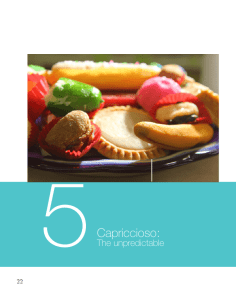


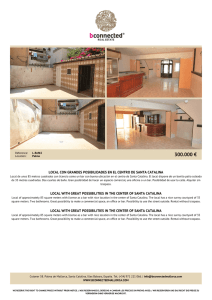
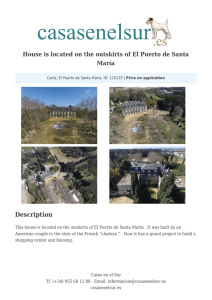
![mayo a octubre [may to october] atención: el bus que realiza este](http://s2.studylib.es/store/data/005070024_1-543eada77f6f2052d3fe7a1827244407-300x300.png)
